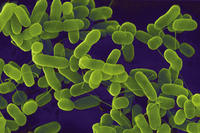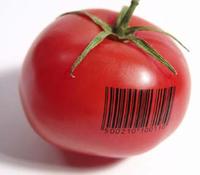-
Better understanding of Listeria
About 20 percent of people diagnosed with listeriosis die, compared to less than 1 percent of those inflicted by Salmonella; the harmful strains of Listeria are thus more lethal than Salmonella, but it exists in benign species and strains as well; scientists discover why some forms of Listeria are fatal and others are not
-
-
FDA bans use of some antibiotic in animals
The cephalosporin class of drugs is important in treating human diseases, such as pneumonia, skin and tissue infections, pelvic inflammatory disease, and other conditions; the FDA has just restricted the use of the cephalosporin class of antimicrobial drugs in food-producing animals in order to preserve the effectiveness of these drugs in treating humans
-
-
Creating drought-tolerance in crops
Researchers’ discovery creates new blueprint for engineering drought tolerant crops; the researchers found a way to rewire this cellular machinery to heighten the plants’ stress response — a finding that can be used to engineer crops to give them a better shot at surviving and displaying increased yield under drought conditions
-
-
Innovative molecular detection system spots foodborne pathogens
3M introduced the 3M Molecular Detection System, a method of detecting dangerous pathogens like Salmonella, E. coli O157, and Listeria, that can shut down businesses and threaten public health
-
-
MSU lands USDA grants totaling nearly $3 million to improve food safety
Three Michigan State University researchers landed grants totaling nearly $3 million from the U.S. Department of Agriculture (USDA) to improve food safety; the three professors are part of the recently created MSU Food Safety Group; this team comprises about thirty MSU researchers from more than ten departments working with other universities around the world to improve food safety
-
-
Safe farm practices initiative launched
Ever since 2006, when a deadly batch of spinach killed three people and sickened hundreds, U.S. farm producers, packers, and others along the distribution line have argued over how best to protect consumers and assure them that leafy greens and tomatoes are safe; now, a major initiative aims to settle these arguments
-
-
Five years after E.coli outbreak, California farmers still struggling
Farmers in Salinas Valley, California, the “salad bowl of the United States,” are still struggling to regain consumers’ trust five years after spinach grown and bagged on a local farm was linked to a deadly E. coli outbreak that killed three people and sickened 206
-
-
Quickly and accurately tracing food-borne outbreaks
Researchers have developed a new technique that could pinpoint the exact nature and origin of food-borne bacteria with unprecedented accuracy
-
-
"Printing" food with plant DNA to prevent counterfeiting
Branded foods from the waters off Japan are becoming popular in Asia; the growing popularity has lured counterfeiters into the market, where they sell common foods as the high-value brand, in the process destroying markets and reputation of the real item
-
-
Laser keeps an eye for spoiled food

Minced meat, bread, fruit juice, and many other foods are packaged in a protective gas which extends their shelf life; there is currently no good method to check whether the packaging has the correct gas content — and thus, whether the content is spoiled or not; researchers have developed a new laser instrument which could solve the problem
-
-
A new pest threatens U.S. agriculture -- iPhone owners can help
A new meandering pest — the brown marmorated stink bug (BMSB) — is feasting on many of North America’s most important crops, posing an unprecedented threat to U.S. agriculture; the value of susceptible crops in the thirty-three states where BMSB has been established or sighted exceeds $21 billion
-
-
Little progress despite $3.4 billion spent on food safety programs

In the past decade the U.S. government has gone to great lengths to secure the nation’s food supply against terrorists, but more than $3.4 billion later it has little to show for its efforts; despite all the government spending, key food safety programs and counter-terror policies have been bogged down by a murky, convoluted bureaucratic process
-
-
Argonne software help decode German E. coli strain

In the early days of annotating genomes in the mid-1990s, it took four or five scientists more than a year to analyze just one genome; now, with the help of Rapid Annotation using Subsystems Technology (RAST), which was developed by Argonne scientists, researchers needed only eight hours to sequence the genome of the rogue E. coli strain which struck Europe this summer; the next-generation RAST will cut this time to just fifteen minutes
-
-
UN warns record food prices to continue
Food prices are projected to continue skyrocketing and remain volatile leaving poor countries and consumers exposed to food insecurity, according to a recently released UN report
-
-
Traceability key to food safety

The produce industry looks at food safety and traceability as the key to reducing the instances of food-borne illnesses; the Food and Drug Administration (FDA) has launched its own effort to protect the integrity of the food supply with the Food Safety Modernization Act, which President Barack Obama signed into law 4 January
-
- All
- Regional
- Water
- Biometrics
- Borders/Immig
- Business
- Cybersecurity
- Detection
- Disasters
- Government
- Infrastructure
- International
- Public health
- Public Safety
- Communication interoperabillity
- Emergency services
- Emergency medical services
- Fire
- First response
- IEDs
- Law Enforcement
- Law Enforcement Technology
- Military technology
- Nonlethal weapons
- Nuclear weapons
- Personal protection equipment
- Police
- Notification /alert systems
- Situational awareness
- Weapons systems
- Sci-Tech
- Sector Reports
- Surveillance
- Transportation
Advertising & Marketing: advertise@newswirepubs.com
Editorial: editor@newswirepubs.com
General: info@newswirepubs.com
2010-2011 © News Wire Publications, LLC News Wire Publications, LLC
220 Old Country Road | Suite 200 | Mineola | New York | 11501
Permissions and Policies
Editorial: editor@newswirepubs.com
General: info@newswirepubs.com
2010-2011 © News Wire Publications, LLC News Wire Publications, LLC
220 Old Country Road | Suite 200 | Mineola | New York | 11501
Permissions and Policies
